10+ Khmer Snacks You Must Try
Cambodia is a must-visit destination for all food lovers who want to explore the authenticity of Southeast Asia cuisine. Besides breakfast, lunch and dinner staples, there are plenty of Khmer snacks that deserve to be on your wishlist as well. You can easily find different types of snacks, from sweet to salty, in any street food stall at reasonable prices. Some can keep you quite full for a long time and give you more energy to enjoy your trip.
About Khmer Snacks
Khmer snacks are various that can suit all taste buds and can serve you from sweetness to saltiness. Most of them share similarities with the cuisine of other Southeast Asian countries. Meanwhile, some were affected by Chinese or French cuisine.
Basically, there are many snacks made from rice with a steam method, together with coconut milk plays an important role as a sweet base. Plus, delicious tropical fruits are added as well to create an authentic, fresh taste. Other dishes are usually fried or stir-fried with full of nutrition sources.
In a nutshell:
- Both light and heavy, salty and sweet treats are available
- Reasonable price
- Some have Chinese or French root
- Easily found in both food stalls and high-end restaurants
Top Khmer Snacks
1. Kralan
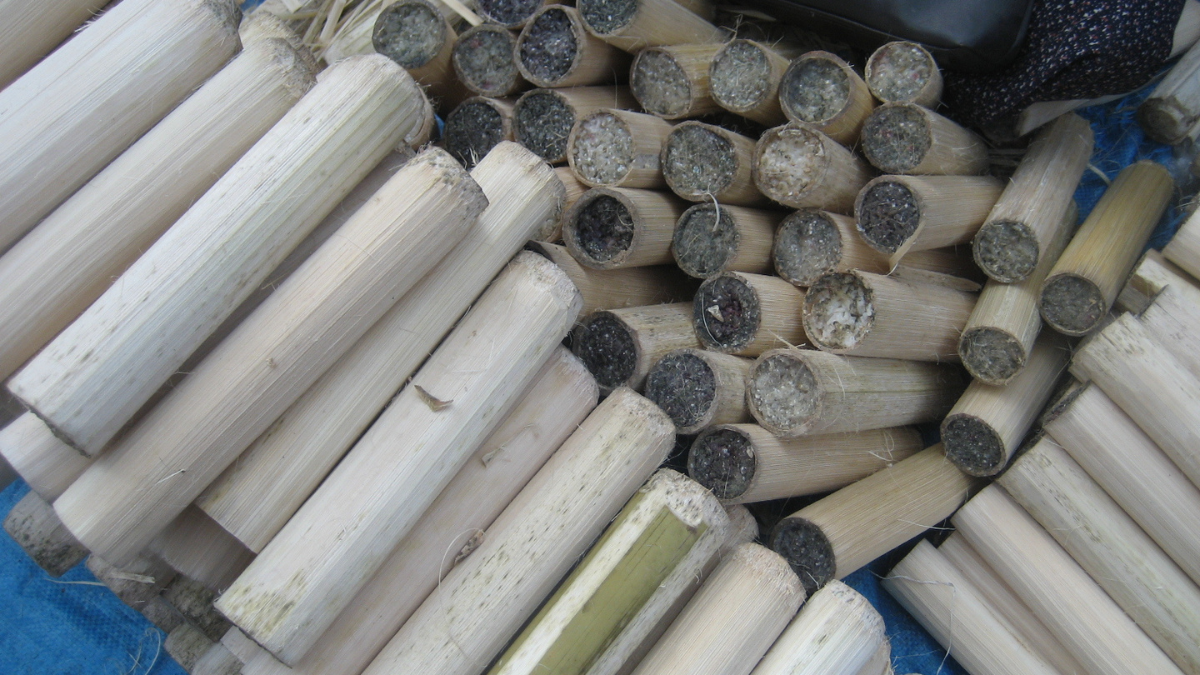
Kralan
The first name we should mention on our list of Khmer snacks is Kralan, sticky rice in bamboo. It's also known as the Cambodian traditional rice dish.
The food comes in an exotic appearance with a mixture of sticky rice, black beans, grated coconuts and coconut milk stuffed inside the bamboo sections. After putting all ingredients in the bamboo sticks, people will slowly roast them over the charcoal fire. That's why you will find a hint of smoky flavour when trying this snack.
Locals usually have Kralan for their new year's occasion, but it's not difficult to find it on the streets. Ladies on bicycles with a bunch of different size bamboo sticks is where you can try the snack at a low price.
This sweet and salty dessert will give you a soft, delicious taste and make you quite full.
2. Bey Dom Neib

Bey Dom Neib
It's a mistake if we don't mention Bey Dom Neib when talking about Khmer snacks. Bey Dom Neib, or mango and sticky rice, originated from Thailand but is also famous in Southeast Asian countries.
The dessert is an excellent combination of soft, white sticky rice and rich flavour coconut milk, complementing perfectly with sweet ripe yellow mango. Its sweetness can satisfy everyone with a sweet tooth.
The cooking method is quite simple. After boiling rice, locals make a caramel colour liquid by heating up palm sugar, coconut cream and salt. When the mixture is done, they mix it with rice to produce a completely smooth and sticky portion. Then, the rice is put on a plate and served with mango slices on top or nearby.
3. Lort Cha
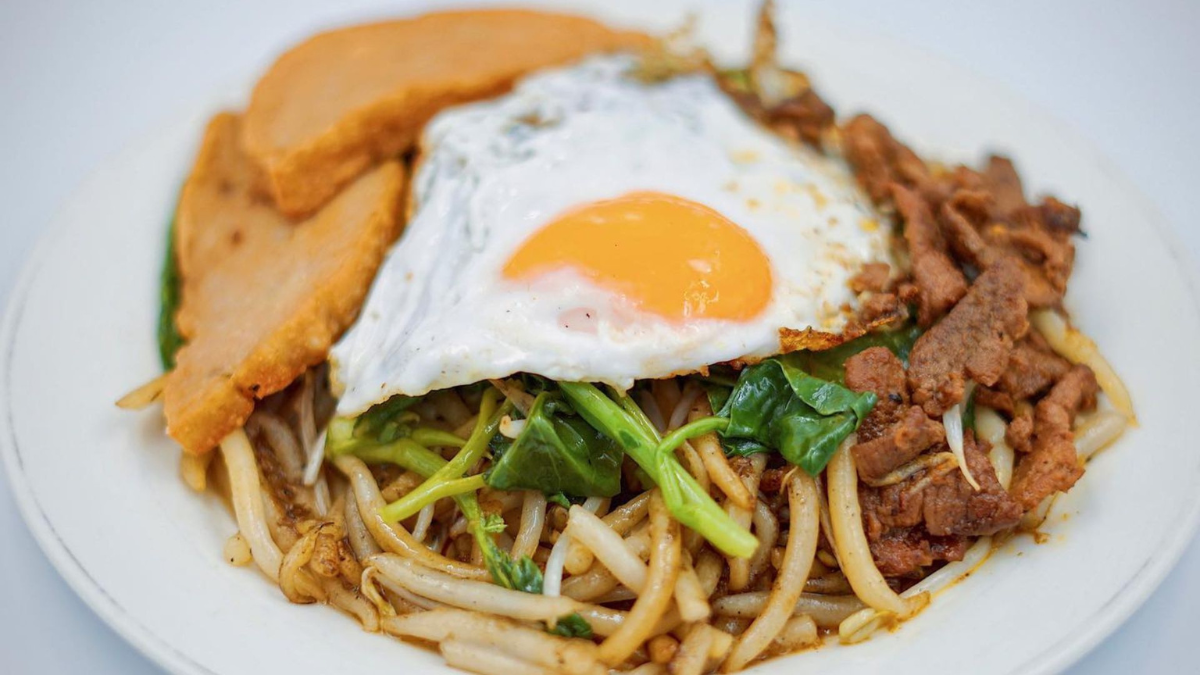
Lort Cha
Lort Cha, stir-fried rice pin noodles, is a full-of-nutrition dish among Khmer snacks. As you may notice, Southeast Asian food usually contains lots of vegetables. As a part of Cambodian food culture, Lort Cha is no exception. The rice pin noodles are stir-fried with minced veggies such as bean sprouts, Chinese broccoli, chives, and green onion.
The added protein sources are various such as chicken, beef or shrimp. Other condiments, chili sauce, and soy sauce are added to enhance the taste. A fried egg is placed on top, making it more delicious.
4. Nom Ka Chai
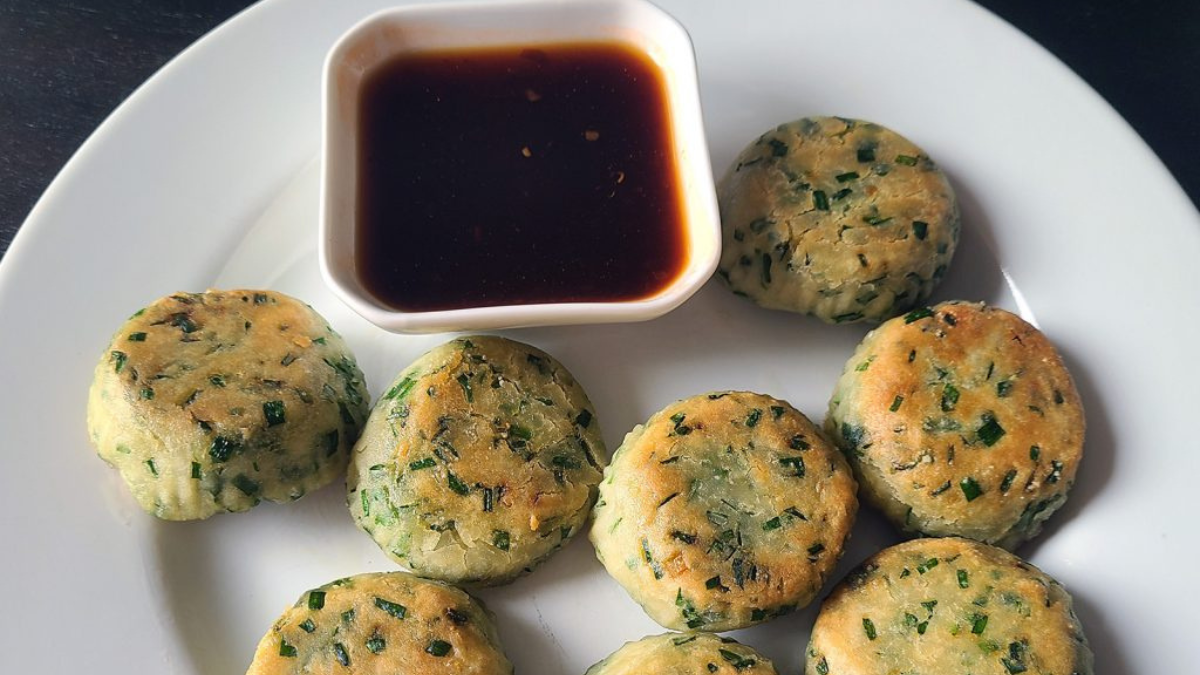
Nom Ka Chai
Nom Ka Chai, or Chive cake, is a Chinese-inspired cake made from glutinous rice flour, chopped chives, and herbs. People then fry the patties in big batches on pans to produce this between-meal snack.
The food is a great combination of crispy outside and soft and sticky inside, making it quite interesting to bite. The sweet and spicy fish sauce is served as a dipping sauce to create a mouth-watering taste.
Like all Cambodian street food, you can find this snack on mobile carts or in small street vendors, mainly in Phnom Penh.
5. Banh Chev
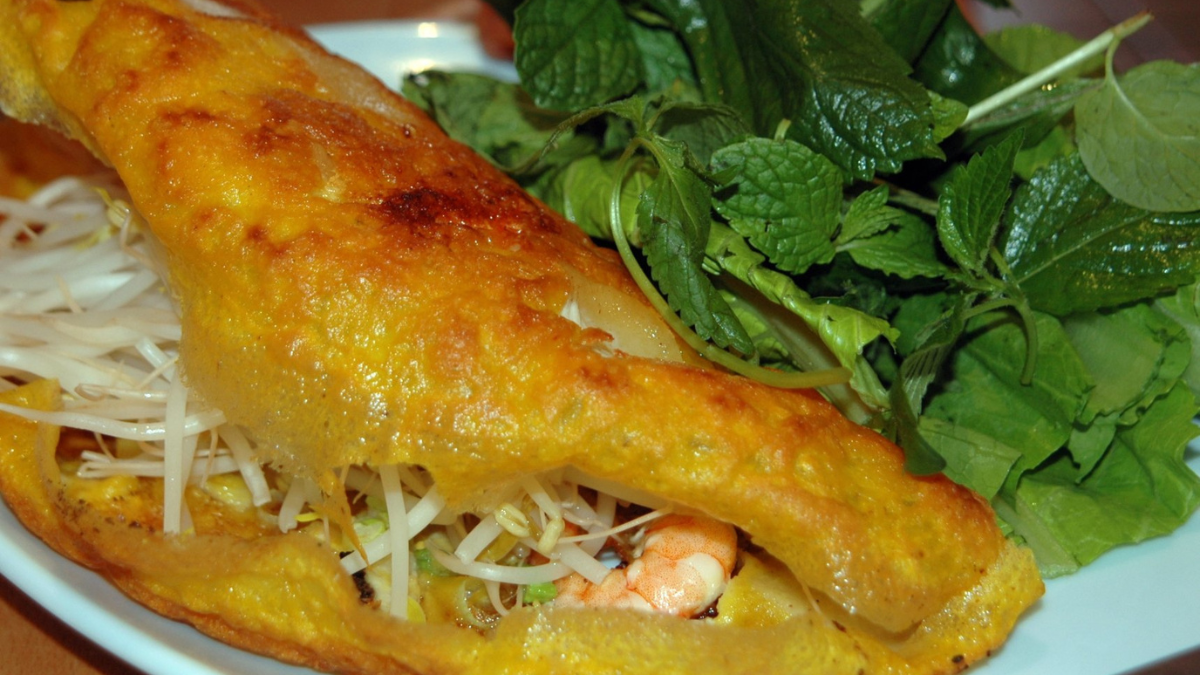
Banh Chev
Banh Chev, also known as another version of Vietnamese Banh Xeo, is the next candidate on our list of Khmer snacks. It has a golden look and fried crispy texture outside, which is made from rice flour, turmeric powder and water. Inside is the stuffing of pork, pawn, mung bean, sprouts, and diced green onions.
This savory stuffed crepe is usually served with common Cambodian dipping sauce, including fish sauce, lime juice or vinegar, water, sugar, dried chilies and roasted peanuts (optional). Lettuce is used as a wrap, and basils, mint, and fish mint are for garnishing.
6. Num Pang
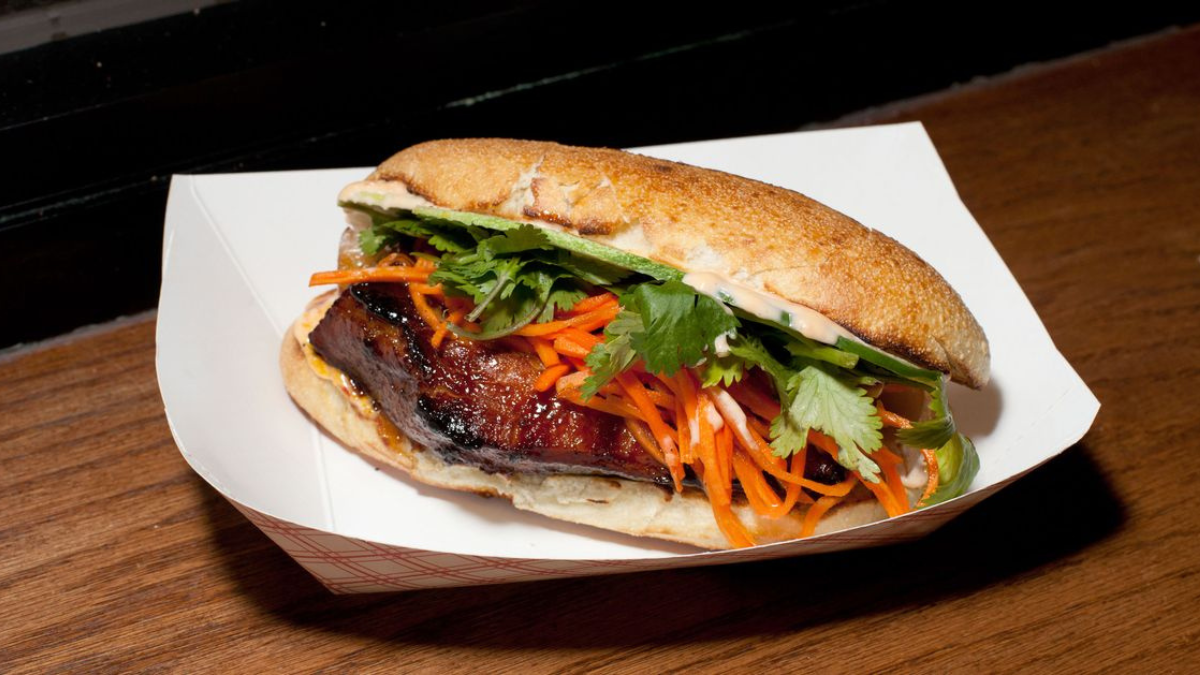
Num Pang
The next worth-trying snack is Num Pang, also known as the Cambodian sandwich. Num Pang vendors are almost everywhere, such as outside the market or next to office buildings. You can spot them by the baguette, a bread style that originated in France during the French colonial period, with trays of ingredients.
This type of street bread contains nutrition, including starch, protein and fibre from vegetables. The meat can be ham or pate, and the veggies are various such as cucumbers, carrots, onions and chives. It also has a colourful and tasty look, attracting foreigners to try it.
7. Nom Pao
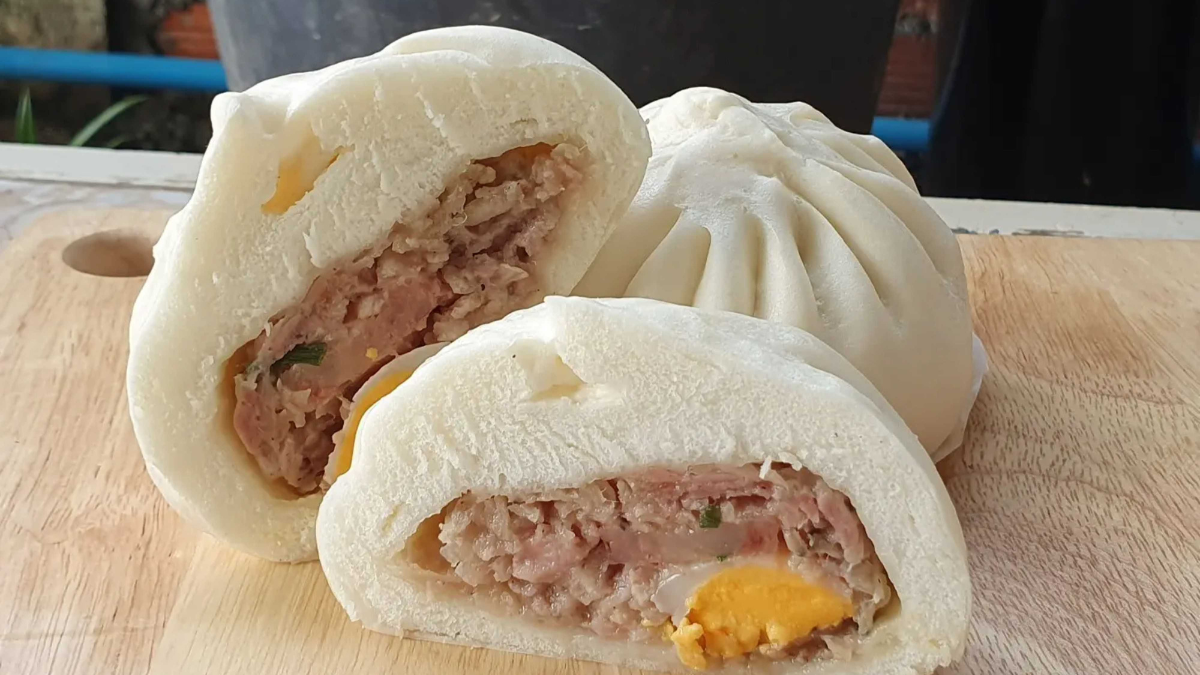
Nom Pao
When travelling to Cambodia, you should definitely look for a dish named Nom Pao, an icon of Cambodian and other surrounding countries' street food.
Nom Pao probably originated from China, where they're named baozi (the word "bao" literally means wrap). The soft white buns are stuffed with a salty filling, including meat and vegetables. Sometimes, hard-boiled quail eggs are put inside as well. There's also an unstuffed version for vegetarians.
The preparation of the dough takes a long time, so once cooked, locals usually cook it to serve in large quantities. After the dough "grows" enough, people separate it into small pieces, put the stuffing and start steaming.
Cambodians make Nom Pao for the new year or family gathering parties, yet you can find it available in many food stalls. Imagine when you sink your teeth inside the soft steamed bun; it's such a pleasant feeling. The savoury and delectable taste will for sure impress you.
8. Kang Kep Baob
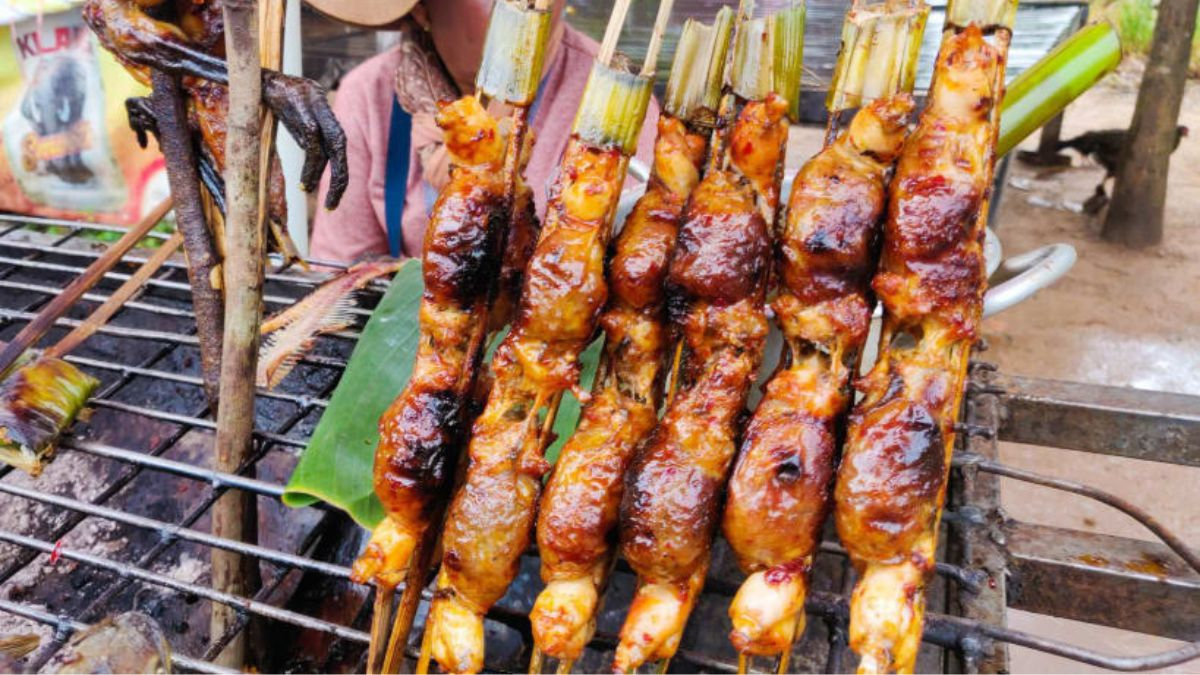
Kang Kep Baob
Kang Kep Baob, or stuffed frog, is one of the amazing Khmer snacks that deserves a try. As its name means, the frog is filled with a blend of ingredients.
The mixture of stuff includes chopped frog meat with pork, coconut, peanuts, saffron and citronella. These are stuffed inside the frog skin, making it fat and funny.
The food needs to be dried under the sun for 15 minutes and then grilled or fried. The hot stuffed frog is served with a delicious smell and tender texture.
9. Kwah Ko
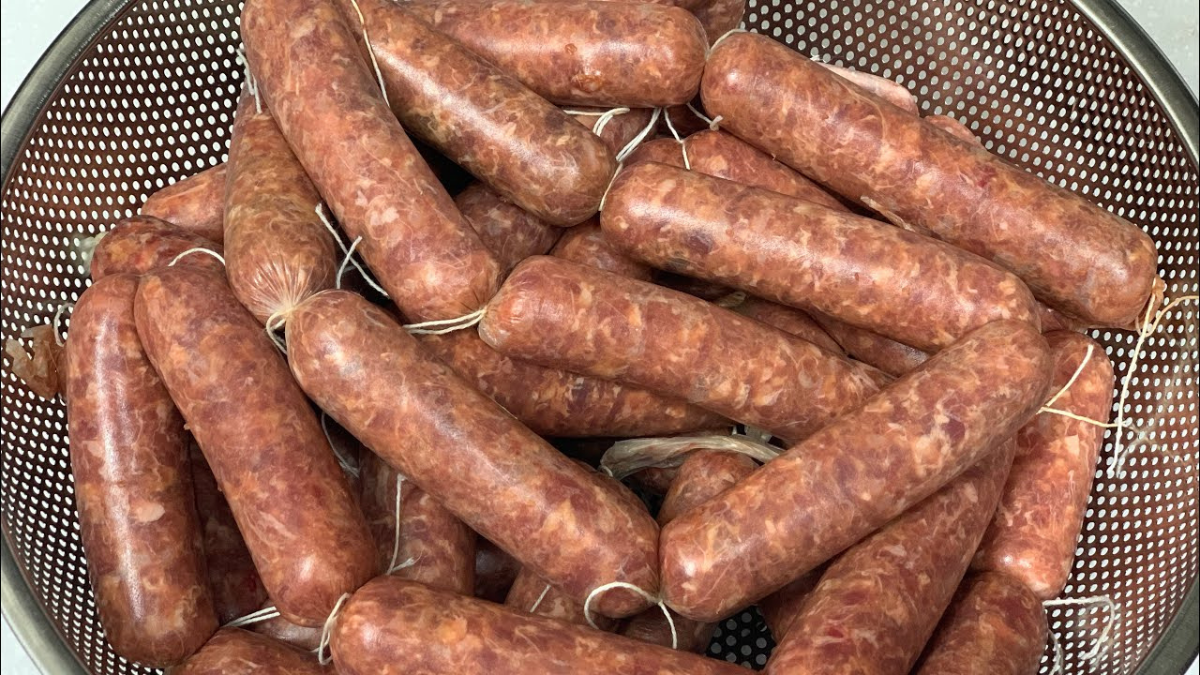
Kwah Ko
One of the typical images of the local market is the sausages hanging off food carts, which come in skewers or small ball shapes.
Kwah Ko is the beef sausage version in which the meat (beef brisket, beef chuck and fat) is seasoned with fresh kaffir lime leaf, garlic, Galangal, sugar, salt, and cooked rice for perfect fermentation. Its taste is slightly sour and sweet. The red colour outside and the feeling of fat inside make the sausage attractive in its own way.
Grill, fry or stir fry are common ways to cook Kwah Ko. It can then be served with steamed rice, noodles or salad.
10. Balut

Balut
You will find the Khmer snacks exotic when trying a dish named Balut, which refers to fertilized eggs. It's also a popular street food in Vietnam and the Philippines. A small warning is that the way the food looks may not really be "attractive".
After the eggs (usually duck eggs) are fertilized, people incubate them for 14-21 days until they reach a certain level suitable for boiling. Locals boil them with plain water or coconut water.
In Cambodia, the dish is served without any bowl but eaten directly from the shell. You need to crack on top of the shell to open the egg, drink its juicy water inside if you want, and add some salt, pepper and lemon juice so your rich source of protein is ready. Use a small spoon to serve yourself. We bet you can't forget the taste for long.
11. Sankhya Lapov
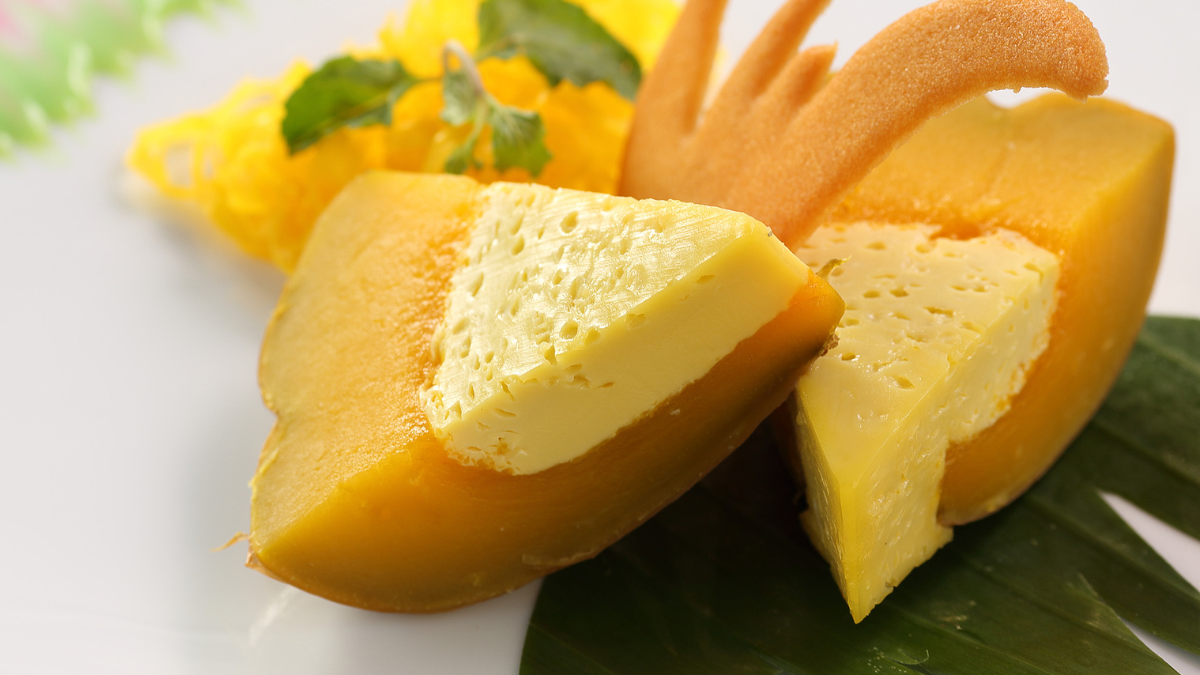
Sankhya Lapov
One of the most famous Cambodian sweet treats is Sankhya Lapov, the Pumpkin custard. You can also find a similar version of it in Laos or Thailand. Khmer people usually prepare this dish for traditional special occasions or religious events.
This traditional dessert is a small pumpkin or kabocha squash filled with coconut cream or milk, palm sugar, eggs and salt. After cutting off the top of the squash and taking off the seeds, the custard is filled inside and steamed until particular doneness. You can enjoy it both when it's hot and chilled.
12. Nom Lort
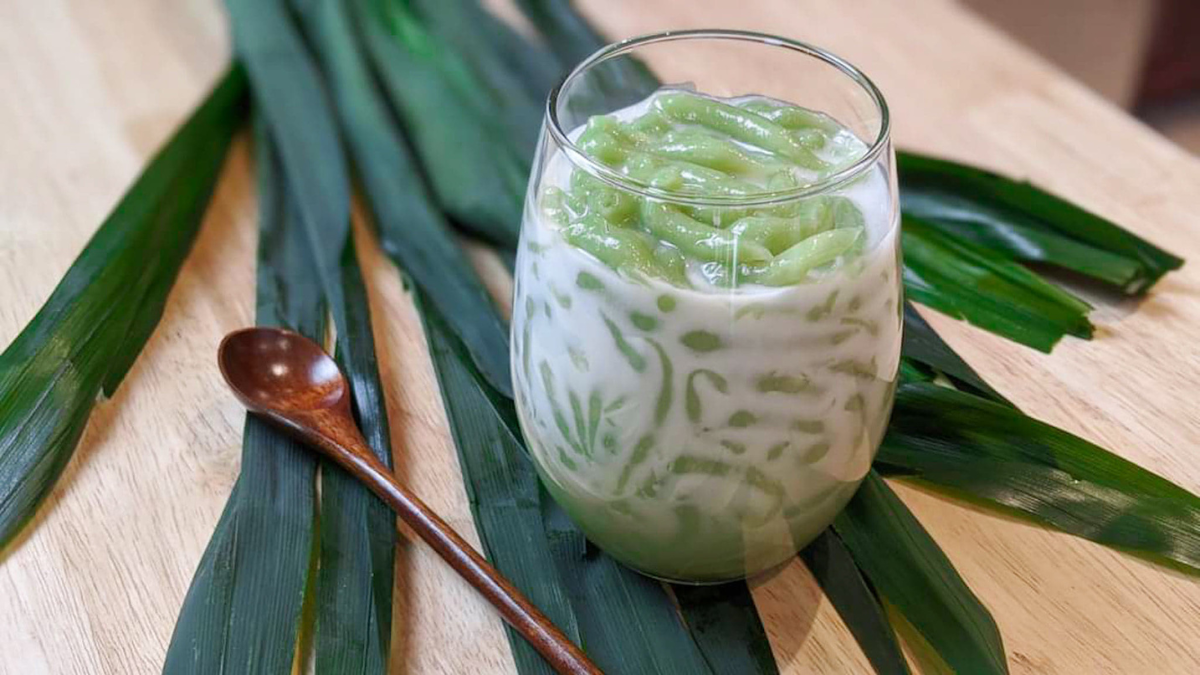
Nom Lort
If you're a sweet lover, you can't ignore Nom Lort, a Cambodian pandan coconut dessert. It's a preferred Khmer snack of locals, especially in extremely hot weather, and also an authentic dessert on the menu of many restaurants.
This dish has a characteristic green colour with the refreshing aroma of pandan leaf extract. You'll feel a soft sweetness since jaggery and coconut milk are added.
To make this food, first, locals make a putting-like mixture by cooking rice with water, pandan leaf juice, and white lime until it becomes a paste, and press it through a strainer. The dish is served in a bowl with added jaggery and coconut milk on top.
13. Num Chak Kachan
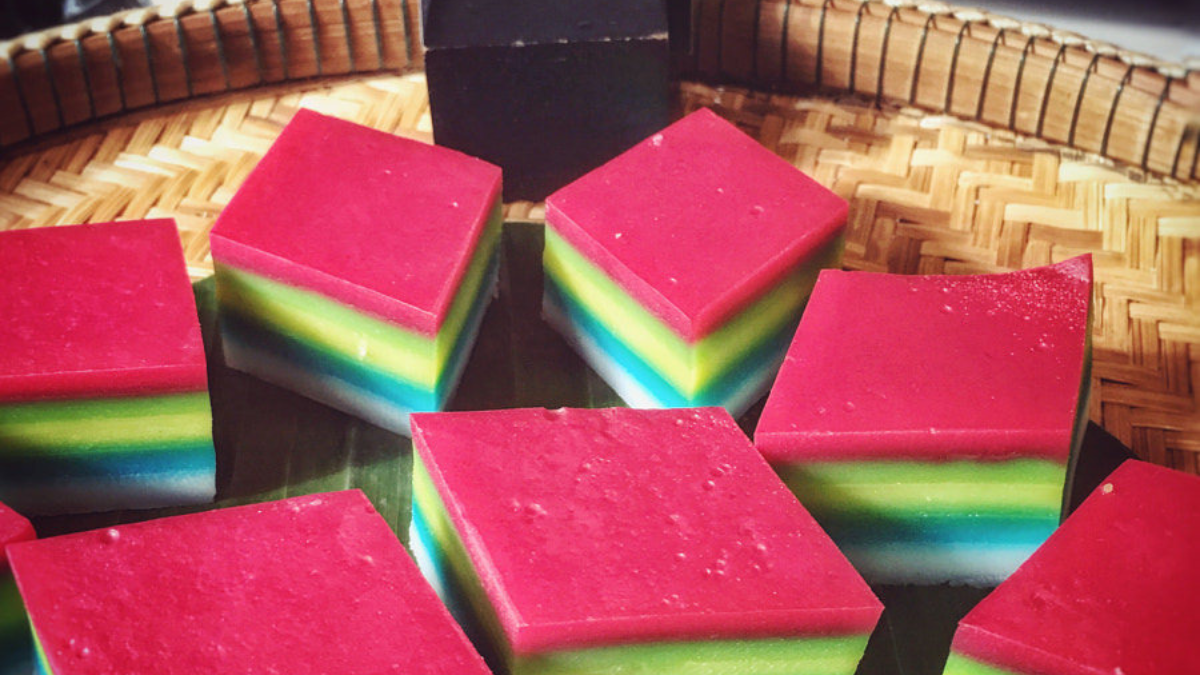
Num Chak Kachan
Num Chak Kachan, or Cambodian layer cake, is a jelly-like glutinous dessert. If you're a big fan of sweet food, it's definitely a must to try.
The cake wins people's hearts with its colourful appearance and soft, smooth texture. Once you put it in your mouth, you'll feel a creamy and melty feeling.
The dessert is made from rice flour, coconut cream and palm sugar. Mix all of these ingredients together and separate them into small bowls. Add to each bowl different food colouring and stem each layer one by one. Each portion may have 4-5 layers.
14. Banh Ja' Neuk

Banh Ja' Neuk
Another option to treat your taste buds with sweet nuttiness is Banh Ja' Neuk, a Glutinous rice ball dessert. This Cambodian snack also has different versions in other Southeast Asia countries and China, where it originated from.
The rice balls are filled with cooked mung beans and then boiled in water until they reach a perfect level of softness. A trick to know when the balls are done is when you see them all float on top. Take them out and place them in small bowls; add sweet ginger syrup, coconut milk and sesame seeds, and here you have your sweet and indulgent dessert.
15. Num Treap
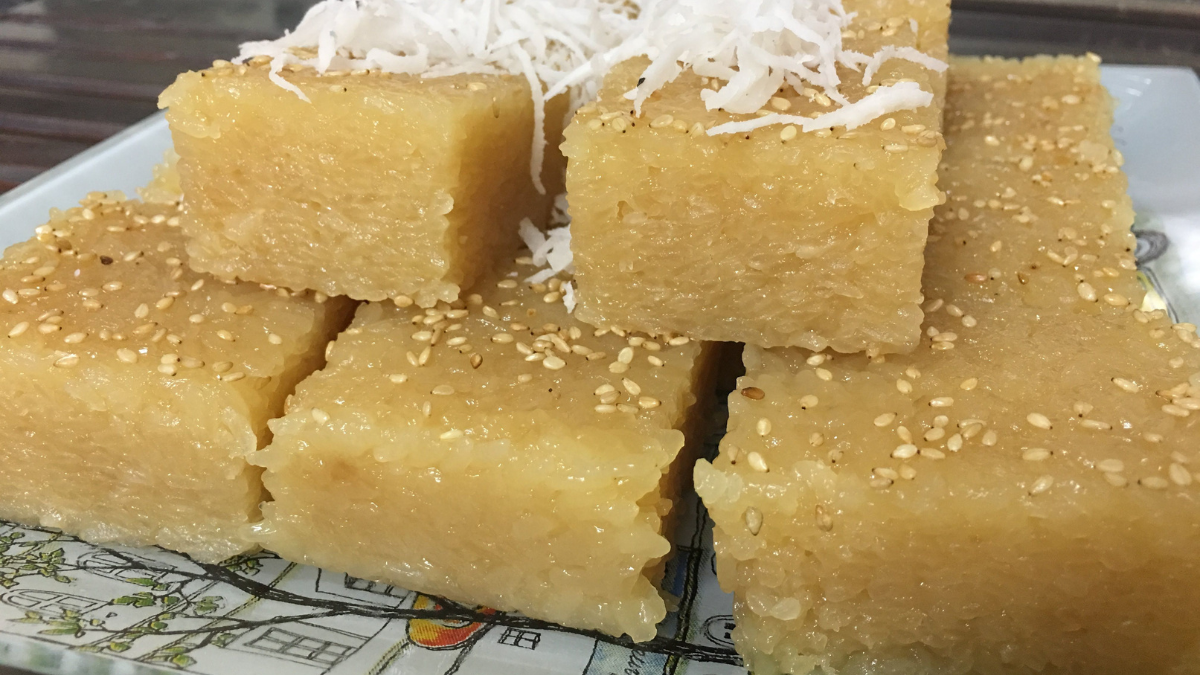
Num Treap
Last but not least, we recommend you try Num Treap when visiting Cambodia. This sticky rice with sesame is a famous Khmer sweet delicacy that everybody loves from the first bite.
The way of making the desert is quite simple and easy. Some say it's similar to making brownies by pouring the treated mixture into a baking dish, then waiting for it to cool down for a few hours and cutting it into square pieces. The combination to make Num Treap includes boiled Jasmine rice and sauce made from boiled coconut milk, sugar, vanilla extract and salt. That's why you'll feel sweet and slightly salty, which is a perfect match for the dish.
Best Places To Try
- Malis Restaurant
- Address: Phnom, 136 Norodom Blvd, Penh 12301, Cambodia
- Opening hours: 6:30 am - 10:30 pm
- Average price: from $10
- Mok Mony
- Address: 63c, Street 294, Phnom Penh 12302 Cambodia
- Opening hours: 6:30 am - 10:30 pm
- Average price: from $5
- Celadon Restaurant
- Address: Angkor High School Road Mane Boutique Hotel & Spa, Siem Reap
- Opening hours: 6:30 - 22:00
- Price: US$ 10-50
When traveling to Cambodia, there's a long list of delicacies, including Khmer snacks, you must try. Don't miss the chance to satisfy your cravings with the delicious and unique snacks of Cambodia. Click on the button below to find your best tour!
Thu Trang
Source: Internet





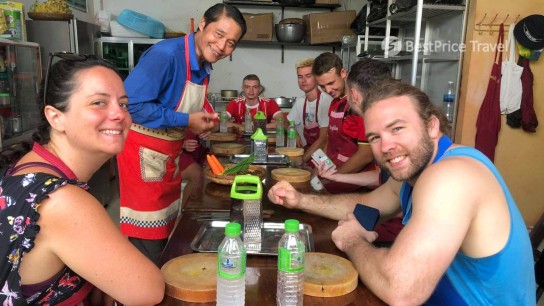

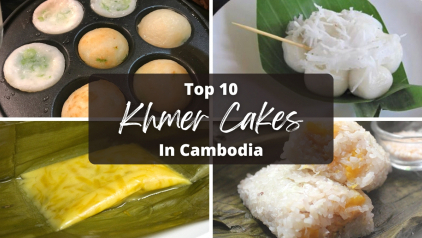
![10 Best Cambodian Street Food to Try [Y]](https://d122axpxm39woi.cloudfront.net/images/guides/422_238/63a2b0a1c95ce.jpg)

